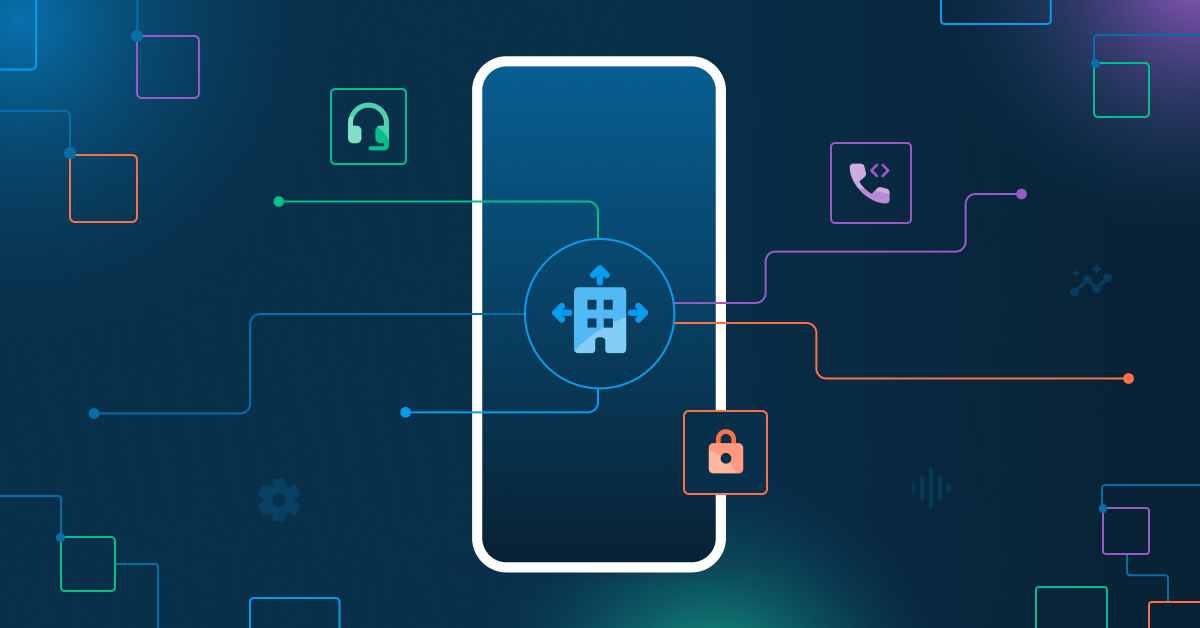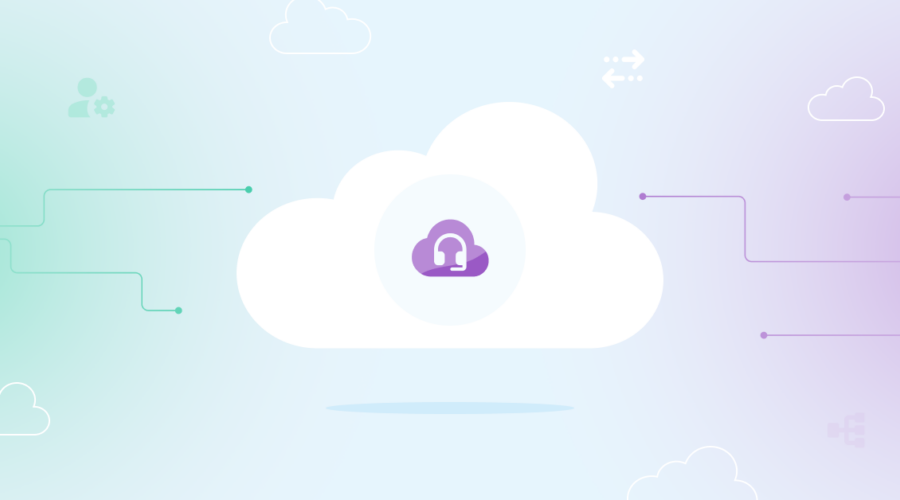POV: You’re about to fly home from a work trip, and your flight gets canceled due to a sudden wintery blizzard. You try to call your airline’s contact center, but the storm has also caused major network outages. You’re stuck, with no chance of making it home in time for the holidays.
While this may sound like the start of your favorite (although cheesy) HallmarkTM holiday movie, real-world disruptions like this happen. Natural disasters and extraordinary scenarios lead to outages of mission-critical services, and CX leaders are on the hook to deliver resilient, dependable support even despite this.
So where did the airline’s contact center go wrong? While they couldn’t have prevented a snowstorm, they could’ve kept their contact center up.
And this isn’t just a theoretical scenario–outages happen every year. Businesses reliant on a single-threaded connection with impacted carriers experience hard outages. Without the right carrier in place, it doesn’t matter how sophisticated your contact center is.
Why on-premise contact centers aren’t always safer
When it comes to business continuity and disaster recovery, enterprises often forget one critical voice from the conversation: the voice provider. IT leaders historically treated their voice provider as a way to power voice, emergency, and messaging services (because that’s what legacy carriers offered). But now, your carrier can do so much more—serving as the launching point for your contact center infrastructure.
Whether in the cloud, on-premise, or a blend of both, contact center resiliency depends on your carrier because it’s the backbone (and hidden vulnerability) of your entire CX ecosystem.
On-premise, legacy environments struggle to keep up with rapid change. Keeping your contact center on-premise does give you full autonomy over call flows and embedding third-party tools. But maintaining the physical infrastructure yourself isn’t efficient or cost-effective, especially for organizations with massive growth or fluctuations in the voice channel.
Even if you can’t or won’t go pure cloud, you’re not excluded from the benefits of the cloud. How? By “unbundling” telephony through Bring Your Own Carrier (BYOC) and moving to hybrid or pure-cloud contact center deployments.
Minimize CX disruption by unbundling voice calling
Most businesses select their contact center platform first, leaving their voice provider as an afterthought. Resiliency, support, and interoperability are side-swept, resulting in a poorly designed network infrastructure.
However, CIOs have uncovered a secret: by choosing a cloud-based carrier, they can put business continuity first in day-to-day operations and lay a solid foundation to compose a prepared, crisis-hardened contact center.

Just like within Maslow’s hierarchy of needs, you need certain elements of your contact center in place first to achieve other “needs” including business continuity, security, and ultimately, an ROI. With a strong carrier foundation, you can build your unique best-in-class contact center.
Resilient customer experiences begin with the carrier
Not all carriers are created equal. Some voice providers don’t own their own network, pushing you farther away from a resolution during disruption. Others have single-threaded networks, leaving you high and dry during an outage, instead of a multi-threaded network that can reroute your traffic during emergencies. Still, others might not offer the global or geographic reach you need, complicating your vendor management as you scale.
And most carriers don’t have the resources allotted to help address your unique telephony challenges, leaving you alone as you navigate cloud migrations, integrations, regulations, and beyond.
Unbundling your contact center telephony with the right voice provider should give you:
- Call quality and uptime. You don’t have to buy from two, five, or ten carriers to avoid being single-threaded. Instead of managing multiple vendors to avoid toll-free downtime, you can eliminate points of failure with a 5x redundant network. If an outage occurs on one thread, your carrier can automatically reroute your toll-free traffic for reliable service (and happier customers).
- More migration control. Whether you’re moving from on-premise to hybrid or cloud-to-cloud, you can take a piecemeal approach to your number management and voice.
- Control and interoperability. As you move different parts of your comms stack off-prem, gaps will arrive that limit you from rebuilding the same ecosystem in the cloud. Critical third-party tools (think fraud mitigation, authentication, conversational AI, IVR, NLP) highlight why your telecom provider acts as the glue of your contact center—without carrier-level integrations, it’s nearly impossible to build a composable CX stack.
- Global scale. Part of continuity is scaling services up and down wherever your customers and agents might be to keep them connected. Look for a carrier who owns their network and numbers in the countries and regions where you need them. Carrier networks with global reach allow contact centers to scale into (or leave) territories with one partner instead of managing different network providers for niche geographies. There’s one relationship to manage, regardless of global footprint.
- Protection from infrastructure vulnerability. External events like hurricanes and earthquakes are unavoidable and uncontrollable. Sending your toll-free traffic through geographically diverse PoPs will help mitigate risk during unforeseen circumstances and eliminate dependency on specific network architecture.
Read the 2024 Enterprise Communications Landscape
See how 1,000 IT leaders like you are creating more resilient customer experiences.

Taking control of high-risk migrations with BYOC
If your contact center is already using cloud-based tools, good news—you’ve taken a huge step towards business continuity. If you’re not quite there yet, we get it. From outlining a plan to port your numbers, rolling out new software, and training up agents, to concerns about toll-free disruption and gaps in integration capabilities, migrating to the cloud is daunting. But all of this can be sidestepped, and even capitalized upon, with the right partner supporting your shift.
By selecting your carrier before your CCaaS platform, you can reinvent your contact center’s resiliency without restriction.




